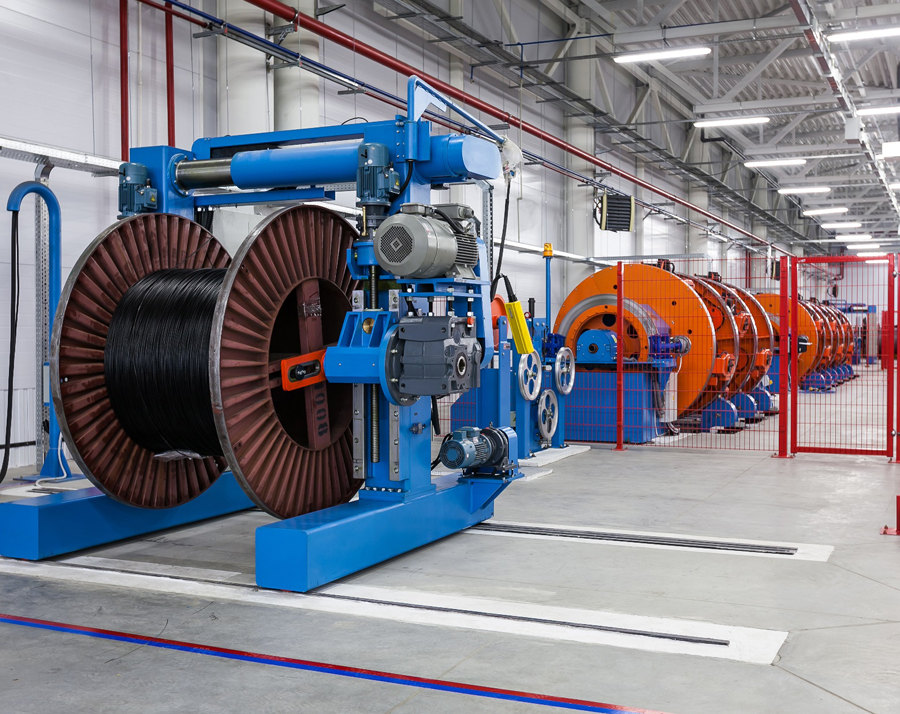Detailed Report On
Cable Manufacturers
Cable manufacturers specialize in producing electrical and communication cables. These vital components facilitate the transmission of electricity and data, underpinning modern infrastructure and connectivity across various industries and applications.
Introduction
Detailed Report on Cable Manufacturers is as follows.
A cable is a conductor or group of conductors that is used in electrical and electronic systems to transmit power or communications signals from one point to another. Electrical signals are used by telephones, wired radios, computers, teleprinters, facsimile machines, and TVs to transmit voice messages, computer data, and visual pictures. The distinction between an electric wire and an electric cable is blurred. The first phrase usually refers to a stranded conductor or an assembly of insulated conductors, but the second usually refers to a single, solid metallic conductor, with or without insulation. Electrical signals are converted to light pulses before being sent via fiber-optic cables made of flexible glass and plastic fibers.

Cable manufacturing is a complicated and significant industrial process that involves the production of a wide range of cables used for power, data, and signal transmission in a number of applications. Power distribution, telecommunications, information technology, transportation, and other businesses rely on these connections. The cable manufacturing process is separated into various parts, each of which requires rigorous engineering and quality control to ensure the reliability and efficiency of the cables. The process begins with raw materials, which are frequently copper or aluminum conductors as well as other insulating and protective materials such as PVC, XLPE, or rubber.
Stranding, which includes twisting together many wire filaments to create a flexible and robust core, is one of the procedures that the conductors go through. This phase enhances the cable’s flexibility, allowing it to tolerate higher currents without succumbing to mechanical stress. Cable manufacturing necessitates a careful balance of engineering innovation and stringent quality control standards. Extruders, cabling machines, and testing equipment are utilized to automate and optimize the manufacturing process. The cable business is always seeking for new methods to enhance materials and manufacturing techniques in order to improve cable performance, minimize energy losses during transmission, and promote environmental sustainability.
Detailed Report Sample On Cable Manufacturers




Market Potential Of Cable Manufacturers
The worldwide cable management market is expected to be valued USD 21.23 billion in 2021. From 2022 to 2030, it is expected to increase at a CAGR of 7.93%, reaching USD 42.19 billion.
Globally, technological advancement has increased the need for energy, high-speed connectivity, large amounts of bandwidth, and data centralization. Furthermore, there is a significant increase in demand for new HVDC cables and cable overheads. Appropriate cable management is critical for the safe and effective use of resources. The expansion of the cable management industry has also been spurred by the public’s rising understanding of technology and its widespread use.
The cable and wire industry is vast and diversified. Direct end users in the cable management industry include the information technology, electrical, construction, and telecommunications sectors. Copper, rubber, plastic (thermoplastics), aluminum, and other common raw materials are used. The geographical dispersion of raw material providers causes price fluctuations. Raw material price changes exacerbate market volatility, and some act as obstacles in the global cable management sector. The study on cables is separated into three categories: installation type, voltage type, and end usage. The market is divided into three types of installations: above ground, subterranean, and beneath the sea. In terms of revenue, the overhead category led the market in 2020 and is expected to do so again throughout the forecast period. By end use, the market is divided into industrial, aerospace & defense, oil & gas, energy & power, IT & communications, and others. The IT and telecommunications category led the market in terms of revenue in 2020, and this trend is expected to continue over the forecast period.
Contents of Project Report
A project report helps you identify whether a project is worth pursuing. It presents the holistic view and brings complete insight of the business and its activity.
It acts as a guide for all the business operations, aids in taking all financial decisions related to the existing businesses and to the start-ups. It serves as roadmap to the business and provides information to the outsider who are wanting to know more about the business.
You will have the opportunity to build new goals and expansion ideas in one single document. Everyone, from the banks to potential investors, will need to have a look at the project report before they shell out any money.
A well drafted project report generally consists details about:
- Brief History of the Business
- The Promoters
- SWOT Analysis
- Industry Outlook
- Past Financial Statements
- Projected Financial Statements
- Infrastructure and Human Resource required
- CMA data
- Business model
- Requirement of Working Capital Funds
- Means of Finance
Other relevant information, if any.
